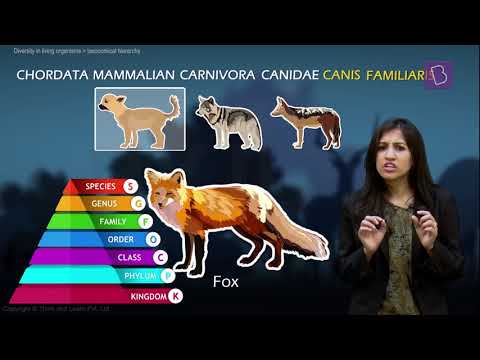Diversity in the living world is immense, with millions of species of organisms identified to date. The world that we live in is over 4.6 billion years old, and within that span of time, evolution has led to innumerable and spectacular biodiversity in the living world. But what exactly is “life”, and how is it defined?
Over the ages, the definition of “life” has been widely disputed, and often, life was attributed to characteristics such as movement, mobility and growth. At a certain point in history, plants were considered non-living. But today, we can tell apart all the organisms that we see into “living” and “non-living.” But when we delve deeper – into the microscopic scale, the line between the two is even more blurred.
What is Living?
We do know that all living organisms reproduce, grow and metabolize. But when we look at the microscopic realm, the actual definition of life is rather blurred. For instance, viruses are basically nucleic acid that is protected by a protein coat. They exhibit no typical characteristics of living organisms, such as reproduction, until and unless it is inside a host.
Another “organism” that borders between the living and non-living are Prions. These are essentially misfolded proteins that can reproduce by making other healthy proteins misfold. These entities are responsible for causing diseases such as Spongiform Encephalopathy, and fatal familial insomnia, which are almost always fatal. In conclusion, the realm between the living and the non-living differs even now as the definition of “life” is ambiguous.
Characteristics of Life
Living organisms exhibit undisputable signs of life – such as growth, reproduction and metabolism. Higher organisms such as humans showcase consciousness – where we become aware of our surroundings. Similarly, consciousness may be observable in many lower forms of life, such as bacteria and protozoa. When these organisms engulf food or react to their environment, it is done primarily to ensure survival.
For more information on Taxonomy, watch the below videos




Diversity in the Living World
In response to the sheer number of organisms discovered to date, a system of standardizing names was implemented. Binomial nomenclature assigns a two-part scientific name to an organism. Botanists and zoologists follow set principles and criteria when assigning a scientific name to an organism. For instance – plant names are assigned based on the principles and criteria set by the International Code for Botanical Nomenclature (ICBN). Similarly, animal names are assigned on the basis of the International Code of Zoological Nomenclature (ICZN).
Classification of organisms according to the aforementioned conventions involved a hierarchy of steps, with each step representing a category or a rank. The most basic unit of classification is species. A species is a group of individual organisms with fundamental similarities.
Detailed Article: Concept of Species
| Also Access |
| NCERT Solutions for Class 11 Biology Chapter 1 |
| NCERT Exemplar for Class 11 Biology Chapter 1 |
Discover more interesting concepts on Biology Notes for Class 11 Chapter 1. Find detailed answers to important questions such as – How all life on Earth is classified, what are viruses and more.
Further Reading:-
| Preparation Tips for CBSE Class 11 Biology Exam | CBSE Class 11 Biology – 3 Marks Important Questions |
Frequently Asked Questions on CBSE Class 11 Biology Notes Chapter 1 The Living World
What is the meaning of diversity?
Diversity is the combination of different types of species and types present among organisms.
What is nomenclature?
The system of naming different species according to their genus and other classifications is known to be nomenclature.
Who is a botanist?
A botanist is a person who studies plant kingdoms and the effect of plant species on the environment.
Comments